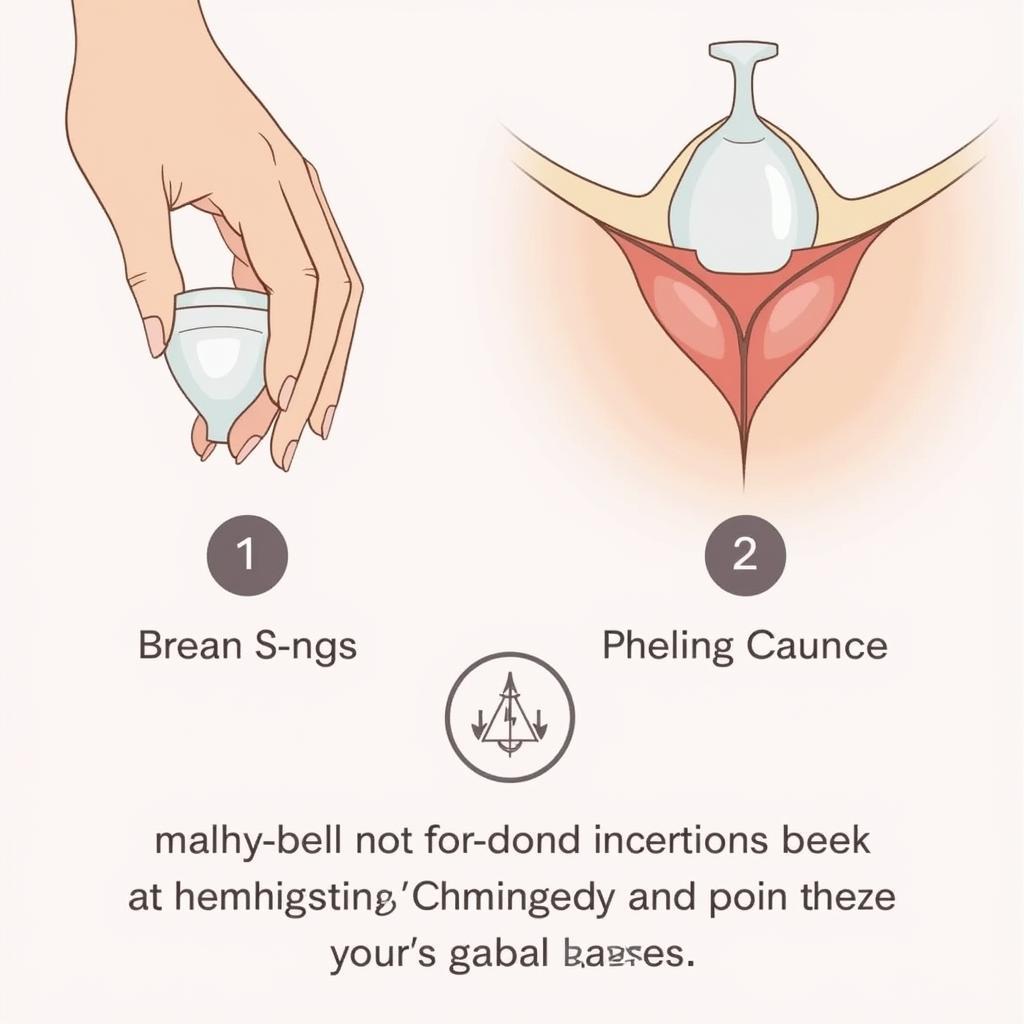Menstrual Cup Period Pain is a topic of much discussion. Many women wonder if switching to a menstrual cup can alleviate their period cramps. This comprehensive guide will delve into the relationship between menstrual cups and period pain, exploring the potential benefits, addressing common concerns, and providing you with the information you need to make an informed decision.
Can Menstrual Cups Reduce Period Pain?
Many users report a reduction in menstrual cramps after switching to a menstrual cup. Unlike tampons, which absorb menstrual fluid and can dry out the vagina, menstrual cups collect the fluid. This can potentially lessen irritation and contribute to a more comfortable period. Some believe that the pressure from a tampon can exacerbate cramps, and the absence of this pressure with a cup can be beneficial. However, it’s important to note that individual experiences vary, and more research is needed to definitively confirm these claims.
Are you curious about how menstrual cups work for different body types? Check out menstrual cup for short cervix.
Understanding the Causes of Period Pain
Before exploring the link between menstrual cups and period pain, it’s essential to understand the underlying causes of cramps. Period pain, also known as dysmenorrhea, is primarily caused by the release of prostaglandins, hormone-like substances that cause the uterus to contract. These contractions help shed the uterine lining, but they can also lead to pain. The severity of cramps varies from person to person.
Factors Affecting Period Pain
Several factors can influence the intensity of menstrual cramps. These include:
- Age: Younger women tend to experience more severe cramps.
- Family history: If your mother or sisters have severe cramps, you’re more likely to as well.
- Smoking: Smoking is associated with increased period pain.
- Heavy bleeding: Heavy menstrual flow can be accompanied by more intense cramps.
- Conditions like endometriosis or fibroids: These conditions can contribute to significantly more painful periods.
For information about menstrual cup safety, visit are menstrual cups safe.
How Menstrual Cups Can Potentially Help with Cramps
One theory behind why menstrual cups might reduce pain is that they don’t absorb menstrual fluid like tampons. This prevents the vagina from drying out, which could potentially reduce irritation and inflammation. Another theory is that the lack of pressure from a tampon can also contribute to less discomfort. Tampons, particularly those with applicators, can sometimes put pressure on the cervix, which might worsen cramps.
 Comfortable Menstrual Cup Insertion
Comfortable Menstrual Cup Insertion
Choosing the Right Menstrual Cup for You
If you’re considering switching to a menstrual cup to manage period pain, it’s crucial to choose the right size and type. Cups come in various sizes, often categorized by factors like age and whether or not you’ve given birth vaginally. Finding the right fit is essential for both comfort and effectiveness. You can find more information on menstrual cup sizing based on bra size at c cup size means. Also, if you’ve recently given birth, menstrual cup after birth offers valuable insights.
Tips for Managing Period Pain with a Menstrual Cup
- Proper insertion: Ensuring correct placement is crucial for comfort and preventing leaks.
- Relaxation techniques: Practices like deep breathing and meditation can help manage pain.
- Heat therapy: Applying heat to your lower abdomen can soothe cramps.
- Pain medication: Over-the-counter pain relievers can provide relief.
Expert Insights: Dr. Anna Nguyen, Gynecologist
“While more research is needed, many of my patients report a positive experience with menstrual cups, noting a reduction in their period pain. Choosing the correct size and ensuring proper insertion are key to maximizing comfort and effectiveness.”
Knowing the appropriate cup size for young girls is also important. Explore girls cup size for more details.
Conclusion
Menstrual cup period pain is a complex topic. While there’s anecdotal evidence suggesting menstrual cups can reduce cramps, further scientific research is needed. However, many women find relief from period discomfort after switching to a menstrual cup. By understanding the potential benefits and choosing the right cup for you, you can make an informed decision about managing your period pain.
FAQ
- Do menstrual cups completely eliminate period pain? While some experience significant pain reduction, complete elimination is not guaranteed.
- Are there any risks associated with using menstrual cups? With proper hygiene and usage, risks are minimal.
- How often should I empty my menstrual cup? Typically, every 12 hours, but it depends on your flow.
- Can I use a menstrual cup if I have a tilted uterus? Yes, with proper placement and potentially a different cup shape.
- How do I clean my menstrual cup? Wash it thoroughly with soap and water between cycles and sterilize it in boiling water.
- What if my menstrual cup leaks? It could be due to incorrect size or placement.
- Can I wear a menstrual cup overnight? Yes, for up to 12 hours.
Common Scenarios and Questions
- Scenario: A woman experiences severe cramps with tampons and wants to try a menstrual cup. Question: Which cup size is recommended for heavy flow and severe cramps?
- Scenario: A teenager is considering switching to a menstrual cup. Question: Are menstrual cups safe for teenagers?
- Scenario: A woman has a short cervix and is concerned about cup placement. Question: Which menstrual cup is best for a short cervix?
Further Exploration
Explore other related articles on our website for more information on menstrual health and menstrual cup usage.
Need Help?
For further assistance, please contact us at Phone Number: 0372999996, Email: [email protected], or visit our office at 236 Cầu Giấy, Hà Nội. Our customer service team is available 24/7.
